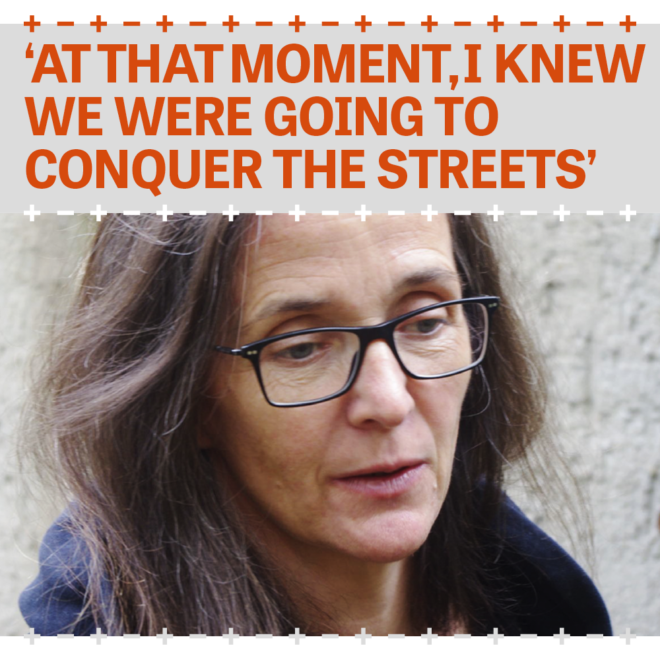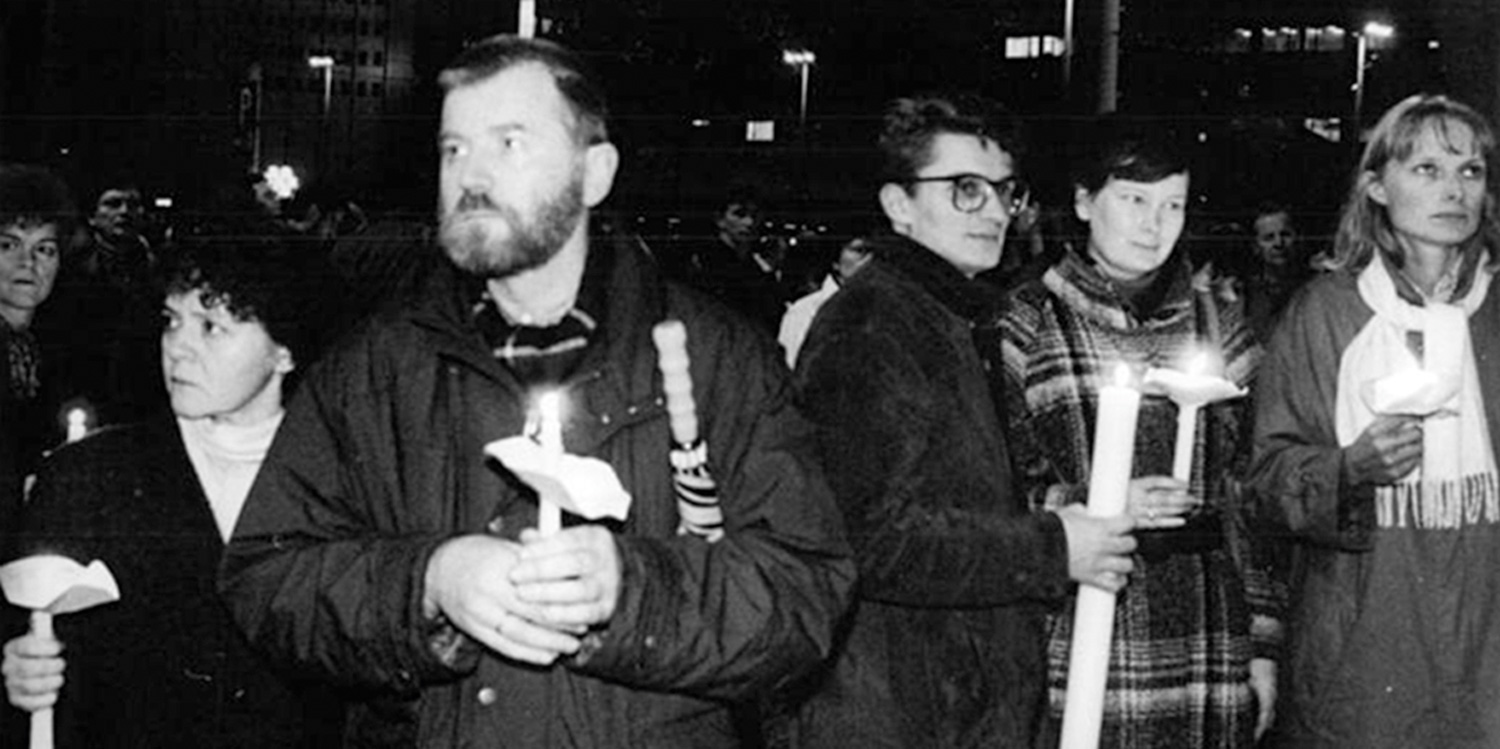Gesine Oltmanns (1965), Leipzig, 1988/1989
“In Leipzig, we felt like ‘the last pitiful remnant’, still stuck in the GDR. Let me remind you: at the end of the summer of 1989 many people had already fled Eastern Europe via the border crossing in Hungary. Our inner drive to protest against the injustice of the regime became stronger every day.
“I longed for the freedom to travel, to choose my own place to live and to make plans for the future. None of those things were possible in the GDR. My father was a priest, and because of that, I was not admitted to the academic programme I had chosen. I had lived in Leipzig for five years before I became politically active in 1988. When a group of activists was arrested in a brutal manner in Berlin, I knew I could no longer stay in the background. I had to do something.
“From 1988 onwards, we regularly organised activities. The opposition movement had weekly meetings after the prayers for peace in the Nikolai Church. We critically discussed various topics: from pollution to the injustice in the GDR and the politics of peace. We could only talk to each other during those meetings, because when you used the telephone, you knew the Stasi would listen in on your call.
“The first Monday Demonstration had a lasting impact on me. The prayers for peace had just finished. The people streamed out of the Nikolai Church, onto the square. Together with another activist, I rolled out a sheet that read: ‘Für ein offenes Land mit freien Menschen’ (‘For an open country with free people’). A few seconds later, the sheet was snatched from our hands by a group of very tall men – plainclothes Stasi officers. We tried in vain to hold on to the sheet. The other activist fell to the ground.
“This whole scene was filmed by a camera team from West Germany. That same night the item was broadcast on West German television, which many critical people from the GDR watched to inform themselves. Everybody saw what had happened that day in Leipzig, that we had made a statement.
“On Monday 18 September, my hope grew strong: that day, the square next to the Nikolai Church was filled with people. The police retreated for the first time. We kept on walking to the ring road of Leipzig, together with fifty thousand others. Even though some people were still arrested, I knew at that moment: there is no turning back, we will conquer the streets again.”
The Monday Demonstrations
The first demonstrations against the GDR took place in Leipzig. After 4 September, there was a protest every Monday, after prayers for peace in the Nikolai Church. In the beginning, the regime seemed to pose a great threat. But soon enough, the demonstrations became so massive that the GDR was no longer able to suppress them. After 9 October, when seventy thousand people took part in the protest, more and more people joined the movement. Cities like Dresden and Rostock followed the example of the Monday Demonstrations. And in early November, more than three hundred thousand people took part in a protest in Leipzig. The mass demonstrations played an important role in the peaceful revolution of the GDR. They were the prelude to the fall of the Wall.

